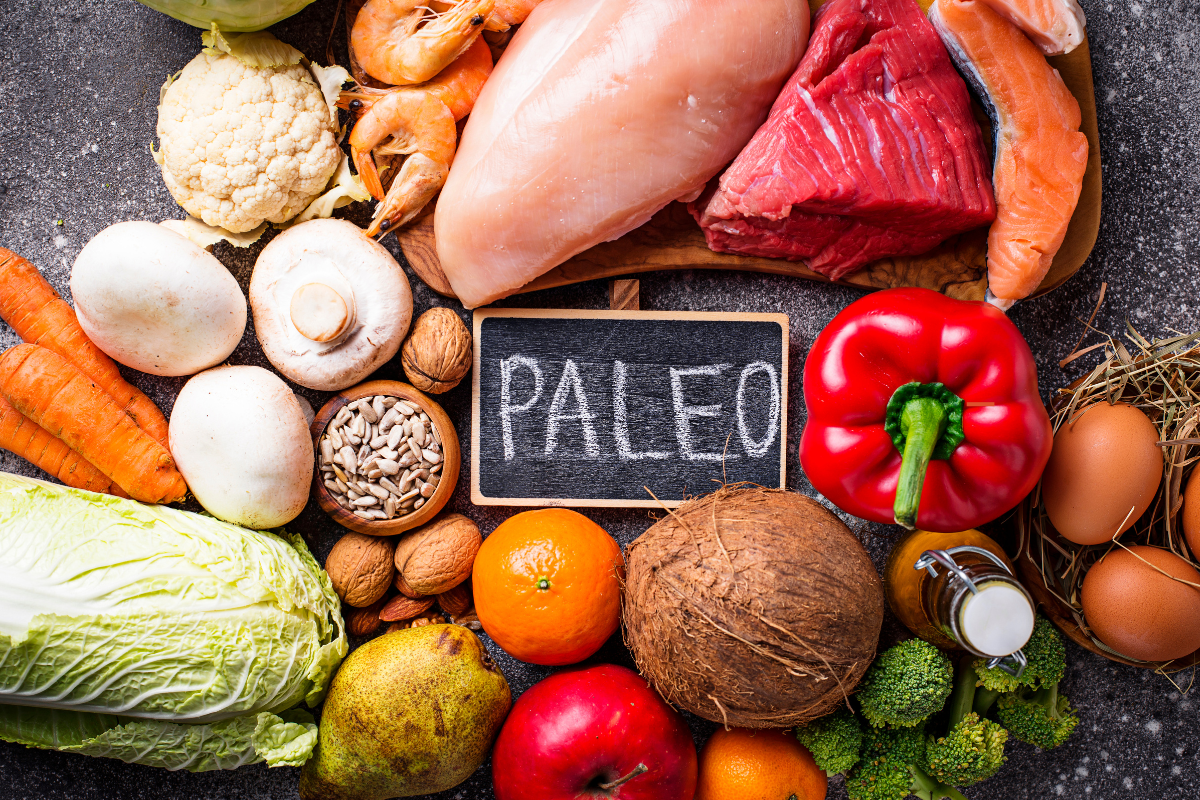Photo by Total Shape on Unsplash Although the paleo diet may seem new, it has actually been around for decades. In fact, it was started in the 1970s by gastroenterologist Walter Vogtling. This doctor was convinced that Paleolithic ancestors could teach modern humans how to eat healthily.
The Paleo or Paleolithic diet in brief
At first glance, the Paleolithic or “paleo” diet seeks to remedy the ills of the 21st century. Indeed, this way of eating is based on foods similar to those that could be eaten in the Paleolithic era. Paleo dieters claim that the key to our health lies in eating a diet similar to what was eaten over 2 million years ago. Our predecessors used simple stone tools that were not sophisticated enough to grow and cultivate plants. They hunted, fished and gathered wild plants for food. If they lived long enough, they were thought to suffer less from modern diseases such as diabetes, cancer and heart disease, thanks to a diet of lean meats and plant foods.
On the other hand, their high level of physical activity (intensive hunting) was also taken into account. However, the life expectancy of our predecessors was only a fraction of that of today’s people.
The Paleolithic diet generally consists of lean meats, fish, fruits, vegetables, nuts and seeds – foods that were once available through hunting and gathering. The paleo diet limits the foods that became common when agriculture was first introduced about 10,000 years ago. These foods include dairy products, legumes and grains. The Paleolithic diet, the Stone Age diet, the hunter-gatherer diet and the caveman diet are other names for the Paleolithic diet.
This diet is based on the fact that the human body is not adapted to the modern diets that emerged with agricultural practices. Agriculture has changed people’s eating habits: dairy products, cereals and legumes have become the basis of the human diet. According to the Paleo diet, this relatively late and rapid dietary change is beyond the body’s capacity to adapt. No doubt this would have contributed to the current epidemics of obesity, diabetes and heart disease.
Is there an authentic Paleo diet?
The Paleo diet, also known as the caveman diet or the Stone Age diet, consists of lean meats, fish, fruits, vegetables, nuts and seeds. In addition, proponents of this diet insist on choosing fruits and vegetables with a low glycemic index. However, there are several aspects of the paleo diet that are debated: what foods actually existed back then, dietary changes in different regions (such as the tropics or the Arctic), the fact that today’s fruits and vegetables bear little resemblance to the prehistoric wild versions, and the conflict between paleo diet proponents over what is included/excluded from the diet. Because of these differences, there is no “true” Paleo diet.
Some of the foods allowed in the Paleo diet
While white potatoes were listed as available in the Paleolithic era, they were often avoided in the Paleo diet because of their high glycemic index. Processed foods are also technically prohibited due to the emphasis on fresh foods, but some paleo diets allow frozen fruits and vegetables because the freezing process preserves most of their nutrients.
Overall, the diet was high in protein, moderate in fat (mostly unsaturated), low in carbohydrates (especially limiting high glycaemic index carbohydrates), high in fibre and low in sodium and refined sugar. In general, this diet emphasises the consumption of grass-fed beef, which is thought to contain more omega-3 fatty acids than conventional corn-fed beef. It actually contains small amounts of alpha-linolenic acid (ALA), which is a precursor to EPA and DHA.
Omega-3 content also varies considerably due to differences in diet and fat metabolism between cattle breeds. In general, grass-fed beef is lower in omega-3 than oily fish.
Does the Paleo diet have an impact on weight loss?
Improved health
Some short-term randomised controlled trials have shown that the Paleo diet has greater short-term benefits than diets based on national dietary guidelines. In the context of weight loss, there was a greater reduction in waist circumference, lower blood pressure, increased insulin sensitivity and lower cholesterol levels. A larger randomised controlled trial followed 70 post-menopausal women with obesity for two years.
They were either given a paleo diet or a diet that followed the Nordic dietary recommendations. In fact, the paleo diet provided 30% of total calories as protein, 40% as fat and 30% as carbohydrates. It consisted of lean meat, fish, eggs, vegetables, fruit, berries, nuts, avocados and olive oil.
The other diet provided less protein and fat but more carbohydrates, as well as low-fat dairy products and high-fibre cereals. Both groups experienced a significant reduction in weight and body fat. However, the paleo diet resulted in greater fat loss after 6 months. Triglyceride levels decreased more significantly on the Paleo diet at 6 and 24 months than on the baseline diet.
Benefits of the Paleo diet may include:
- Increased weight loss
- Improved insulin sensitivity
- Improved blood pressure
- Lower triglycerides
- Better appetite management
My favourite Paleo products on Soin et Nature
- Omega 3
- Glycine
- Vitamin D
- Probiotics
- Honey
- Clay
- Raw Cocoa
- Cinnamon
- Dried flowers
Sources:
Tarantino G, et al. Hype or reality: Should patients with metabolic syndrome-related NAFLD be on the Hunter-Gatherer (Paleo) Diet to decrease morbidity? Journal of Gastrointestinal and Liver Disease. 2015;24:359. Should we eat like our caveman ancestors? Academy of Nutrition and Dietetics. http://www.eatright.org/resource/health/weight-loss/fad-diets/should-we-eat-like-our-caveman-ancestors. Accessed March 17, 2017. Manheimer EW, et al. Paleolithic nutrition for metabolic syndrome: Systematic review and meta-analysis. American Journal of Clinical Nutrition. 2015;102:922. Beals KA. Is a paleolithic diet the key to achieving optimal health and athletic performance? American College of Sports Medicine Health and Fitness Journal. 2016;20:18. Wang C, et al. Macro-process of past plant subsistence from the Upper Paleolithic to Middle Neolithic in China: A quantitative analysis of multi-archaeobotanical data. Plos One. 2016;11:e0148136. Dietary guidelines for Americans, 2015-2020. U.S. Department of Health and Human Services. https://health.gov/dietaryguidelines/.
Accessed May 28, 2017.







